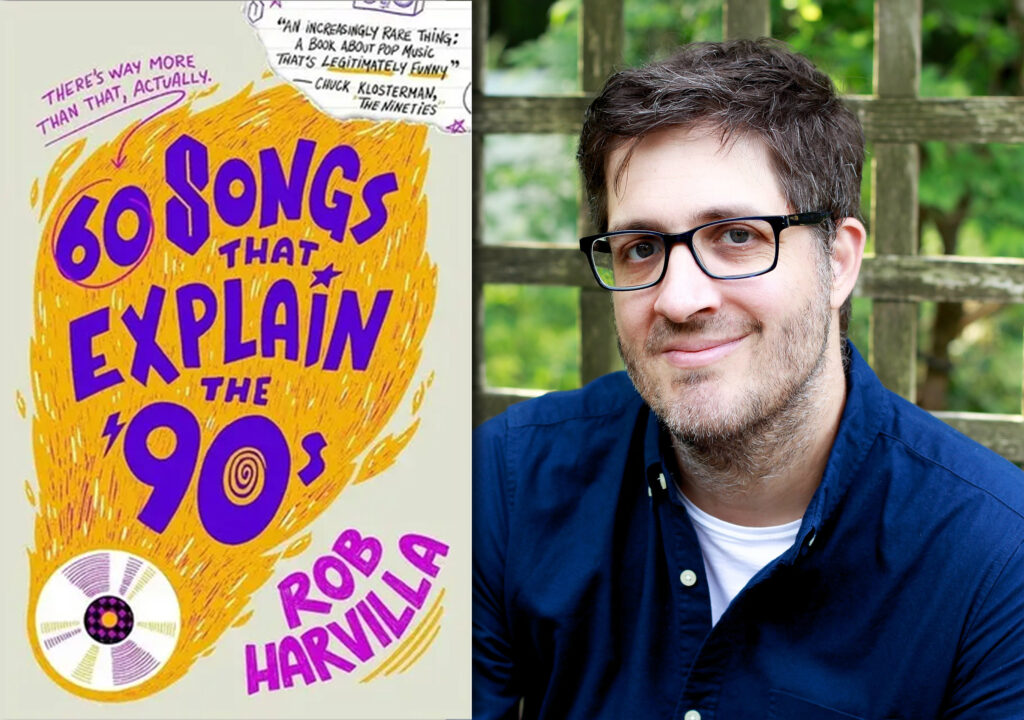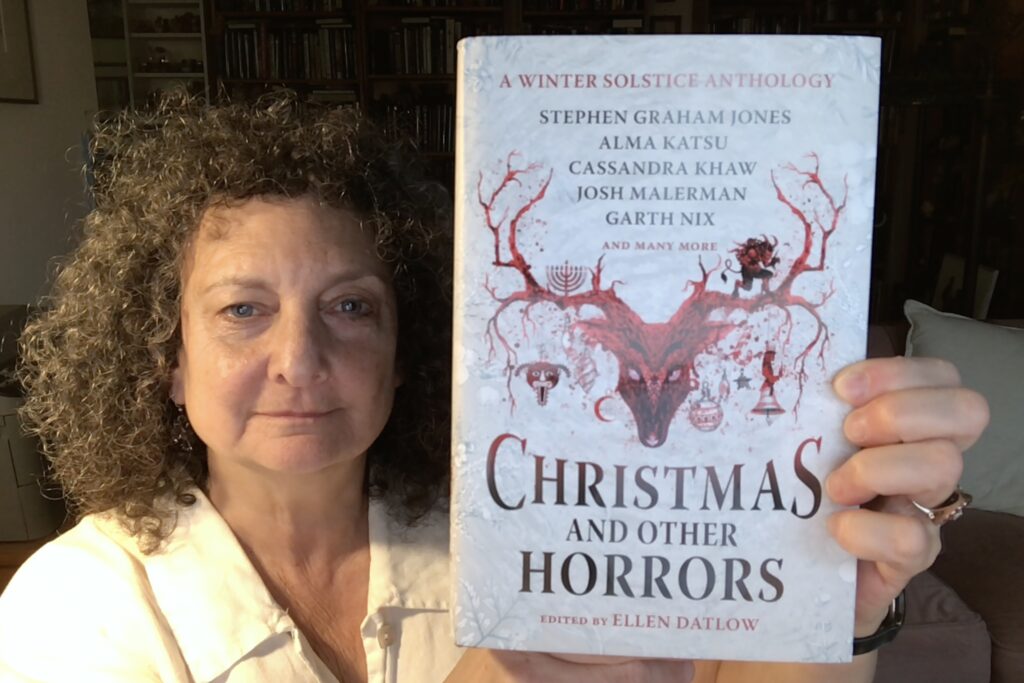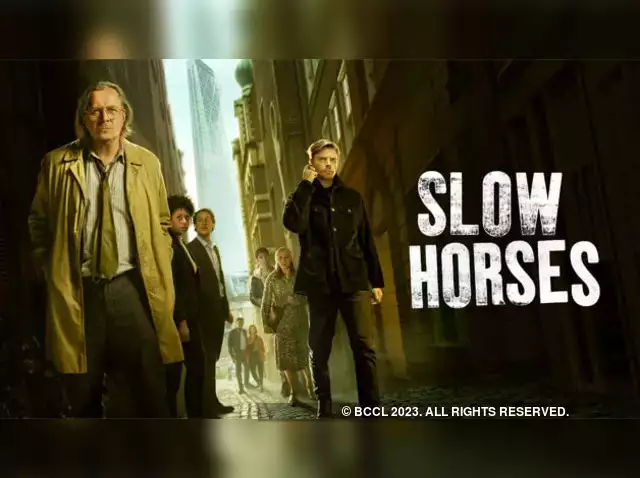
I confess: I only recognize about 30% of the songs Bob Havilla analyzes in 60 Songs That Explain the ’90s. But after reading Havilla’s book, I’m going to listen many of the songs he recommends.
60 Songs That Explain the ’90s is a companion to the #1 music podcast on Spotify. This book takes readers through the greatest hits that define a weirdly undefinable decade and explores that decade’s nooks and crannies.
The 1990s were a chaotic and gritty and utterly magical time for musi. Havilla gives readers a guided tour of the confounding mix of genres and lifestyles and superstars: from grunge to hip-hop, from sumptuous R&B to rambunctious ska-punk, from Axl to Kurt to Missy to Santana to Tupac to Britney.
Since I just saw a Max Martin musical, & Juliet (you can read my review here), I thought I’d see what Bob Havilla had to say about Martin and his songs: “A Max Martin joint is never a Max Martin solo joint–often there’s a half-dozen other writers and producers in the mix, and the sheer number of people involved gives you some idea of how difficult it is to generate such simple pleasures. The resulting block-buster songs are less songs than equations, albeit luxurious equations that entail one pop star or another purring sexy-adjacent nonsense direct into your ears.” (p. 13-14)
In 60 Songs That Explain the ’90s you’ll find familiar songs and songs you never heard of (but should have according to Havilla). How many of these songs do you recognize? See any favorites here? GRADE: B+
TABLE OF CONTENTS:
Introduction — ix
Chaos agents — 1
- Celine Dion, “My Heart Will Go On”
- Hole, “Doll Parts”
- Madonna, “Vogue
- Spice Girls, “Wannabe”
- Backstreet Boys, “I Want It That Way”
- Eminem, “My Name Is”
- Beck, “Loser”
- Master P. “Make ‘Em Say Uhh!”
- Prodigy, “Firestarter”
- The Chicks, “Goodbye Earl”
- Erykah Badu, “Tyrone”
Sellouts (or not) (or maybe) — 29
- Metallica, “Enter Sandman”
- Pantera, “Walk”
- Temple of the Dog, “Hunger Strike”
- Coolio, “Gangsta’s Paradise”
- Ice Cube, “It Was a Good Day”
- Reel Big Fish, “Sell Out”
- The Mighty Mighty Bosstones, “The Impression That I Get”
- No Doubt, “Just a Girl”
- Fugazi, “Merchandise”
- Green Day, “Longview”
Women vs. “women in rock” — 53
- The Sundays, “I Kicked a Boy”
- The Cranberries, “Zombie”
- Garbage, “Only Happy When It Rains”
- PJ Harvey, “Man-Size”
- Alanis Morissette, “You Oughta Know”
- Tori Amos, “Cornflakes Girl”
- The Breeders, “Cannonball”
- TLC, “No Scrubs”
- Sinead O’Conner, Nothing Compares 2 U”
- Fiona Apple, “Criminal”
- Sheryl Crow, “If It Makes You Happy”
Vivid geography, or, everybody hates a tourist — 79
- Wu-Tang Clan, “C.R.E.A.M.”
- Mobb Deep, “Shook Ones, Pt. II”
- Nas, “N.Y. State of Mind”
- Pulp, “Common People”
- Bjork, “Hyperballad”
- Missy Elliott, “The Rain (Spa Dupa Fly)”
- Outkast, “Elevators (Me & You)”
- Juvenile, “Back That Azz Up”
- Jane’s Addiction, “Been Caught Stealing”
- Soundgarden, “Black Hole Sun”
- Luniz, “I Got 5 on It”
Villains + adversaries — 103
- Third Eye Blind, “Semi-Charmed Life”
- Oasis, “Wonderwall”
- Blur, “Song 2”
- A Tribe Called Quest, “Check the Rhine”
- Pavement, “Range Life”
- Smashing Pumpkins, “Cherub Rock”
- Limp Bizkit, “Nookie”
- Offspring, “Pretty Fly (For a White Guy)”
- DMX, “Ruff Ryder’s Anthem”
- Brandy + Monica, “The Boy is Mine”
Flukes + comebacks + spectacular weirdos — 131
- Los Del Rio, “Macarena (Bayside Boys Remix)”
- Billy Ray Cyrus, “Achy Breaky Heart”
- The New Radicals, “You Get What you Give”
- The Cherry Poppin’ Daddies, “Soot Suit Riot”
- Cher, “Believe”
- Chumbawanba, “Tubthumping”
- Tag Team, “Whoomp! (There It Is)”
- Mark Morrison, “Return of the Mack”
- Santana + Rob Thomas, “Smooth”
- Vanilla Ice, “Ice Ice Baby”
- Natalie Imbruglia, “Torn”
Teenage hijinx — 153
- Rage Against the Machine, “Killing in the Name”
- Body Count, “Cop Killer”
- Guns N’ Roses, “November Rain”
- Red Hot Chili, Peppers, “Under the Bridge”
- Alice In Chains, “Would?”
- They Might Be Giants, “Particle Man”
- Cake, “The Distance”
- Weezer, “Undone (The Sweater Song)”
- Beastie Boys, “Sabotage”
- Radiohead, “Creep”
- Pearl Jam, “Yellow Ledbetter”
Sex + romance + immaturity — 179
- Salt-N-Pepa, “Shoop”
- Nine Inch Nails, “Closer”
- Tool, “Stinkfist”
- Prince, “Gett Off”
- Boyz II Men, “End of the Road”
- Liz Phair, “Fuck and Run”
- Sunny Day Real Estate, “In Circles”
- Bonnie Rait, “I Can’t Make You Love Me”
- Dave Matthews Band, “Crash Into Me”
- Blink-182, “What’s My Age Again?”
Myths vs. mortals — 207
- Nirvana, “Smells Like Teen Spirit”
- The Notorious B.I.G., “Juicy”
- Selena, “Que Creias?”
- Dr. Dre, “Nuthin’ But a ‘G’ Thing”
- Whitney Houston, “I Will Always Love You”
- Britney Spears, “…Baby One More Time”
- Aaliyah, “One in a Million”
- Get Boys, “Mind Playing Tricks on Me”
- Lauryn Hill, “Ex-Factor”
- Shania Twain, “Man! I Feel Like a Woman”
Big feelings. — 237
- Tom Petty, “It’s Good to Be King”
- Janet Jackson, “Together Again”
- Black Box, “Everybody Everybody”
- Mariah Carey “All I Want for Christmas is You”
- The Verve, “Bitter Sweet Symphony”
- Gin Blossoms, “Hey Jealousy”
- Counting Crows, “A Long December”
- Mary J. Blige, “Real Love”
- Bone Thugs-N-Harmony, “The Crossroads”
- Lisa Loeb, “Stay (I Missed You)”
ACKNOWLEDGEMENTS — 265










